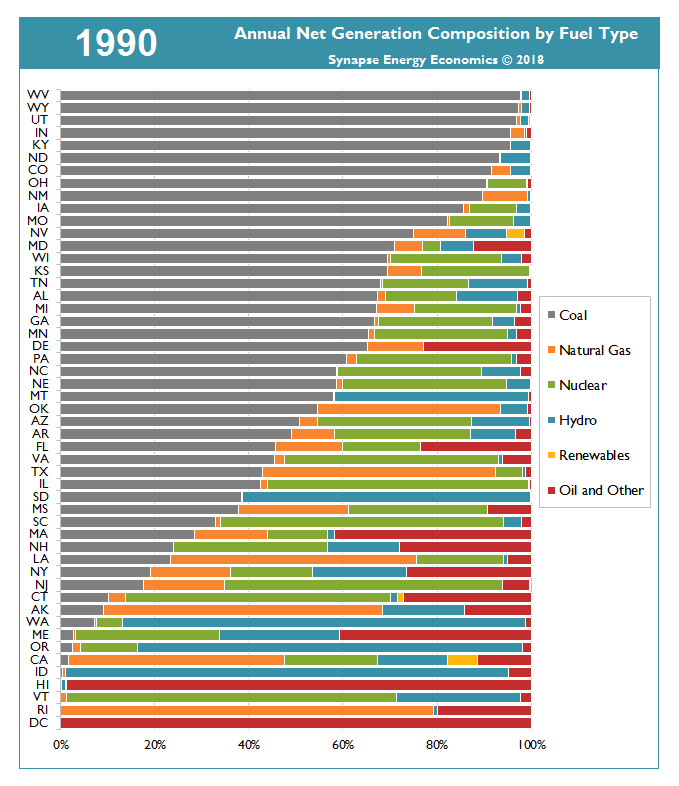Synapse Electricity Snapshot 2018
Today’s electric system is almost unrecognizable from the electric system a decade ago. Generation from natural gas and renewables has accelerated to replace the rapid and unprecedented retirement of coal-fired generators. Wind, solar, and geothermal electric generating capacity in the United States has now eclipsed capacities from hydroelectric and nuclear resources combined. Carbon dioxide (CO2) emissions have reached their lowest levels since 1987, when Whitney Houston topped the charts with “I Wanna Dance with Somebody.” Meanwhile, both total generation and electric sales have held steady for 10 years. The “Synapse Electricity Snapshot 2018” (available here) highlights several major trends in 2017 electric sector capacity, generation, and CO2 emissions. Our key findings include the following:
- Renewable capacity is now at 120 gigawatts (GW) and exceeds both hydro and nuclear capacity. Renewables are now the third-largest resource on a capacity basis, behind natural gas and coal. Together, non-CO2-emitting generating capacity makes up 27 percent of the nationwide total and accounts for 35 percent of all generation.
- Retirement of old and uneconomic coal plants has led to the lowest level of coal capacity since 1982.
- Natural gas generation surpassed coal generation for 9 out of the 12 months of 2017.
- Since 2008, annual growth in electric retail sales has averaged -0.2 percent per year.
- Since hitting an all-time peak in 2008, electric sector CO2 emissions have declined to 1,740 million metric tons in 2017, their lowest level since 1987. Electric sector CO2 emissions are now below 1990 levels.
- Since 1990, the metric ton of CO2 emitted per dollar of GDP has decreased by 49 percent from 0.18 to 0.09 kg per dollar.
The animation in Figure 1 demonstrates how the resource mix of energy generated in each state has transformed between 1990 and 2017. Over time, the share of generation from coal has shrunk compared to that of natural gas and renewables (see Table 1). In 2017, 17 states produced 10 percent or less of their generation from coal, compared to nine states in 2008, with twice as many states producing less than 1 percent of their electricity from coal, relative to 10 years ago. In 2017, 17 states produced 10 percent or more generation from renewables, compared to zero states in 2008. And five states now produce more than one-quarter of their electricity from renewables.
Figure 1. Annual net generation composition by fuel type and state, 1990-2017

Note: In this figure, "Renewables" includes wind, solar, geothermal, and storage while "Oil and Other" includes oil, biomass, petcoke, solid waste, landfill gas, tires, purchases, and other miscellaneous fuel types. This figure only shows generation from utility-scale resources and does not include distributed generation (e.g., rooftop solar).
Sources: EIA Forms 923, 906, 920, 759, and 867, 1990-2017
Table 1. Number of states with low levels of coal or high levels of renewables
|
2008 |
2017 |
|
|
Number of states producing 10 percent or less generation from coal |
9 |
17 |
|
Number of states producing 1 percent or less generation from coal |
4 |
8 |
|
Number of states producing 10 percent or more generation from renewables |
0 |
17 |
|
Number of states producing 25 percent or more generation from renewables |
0 |
5 |
Read the Synapse Electricity Snapshot 2018